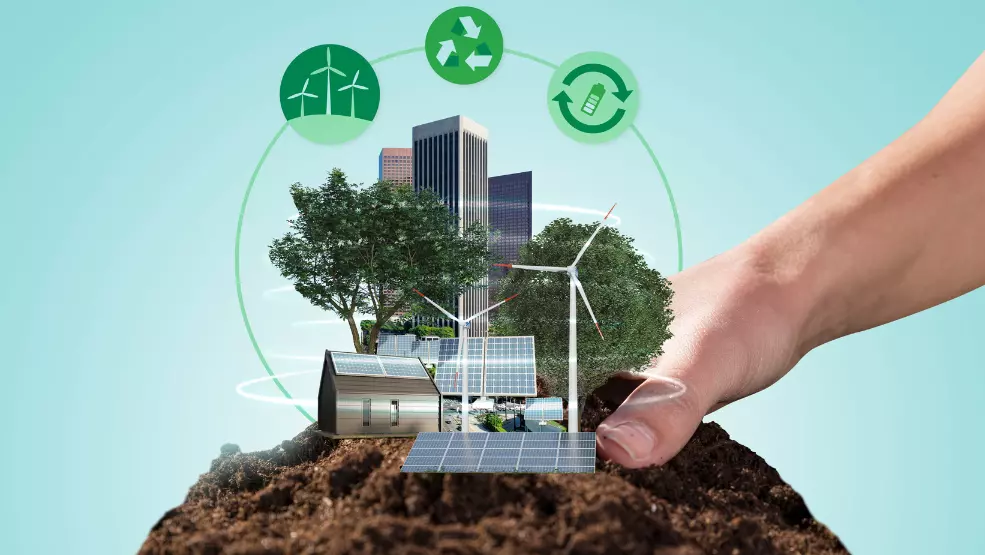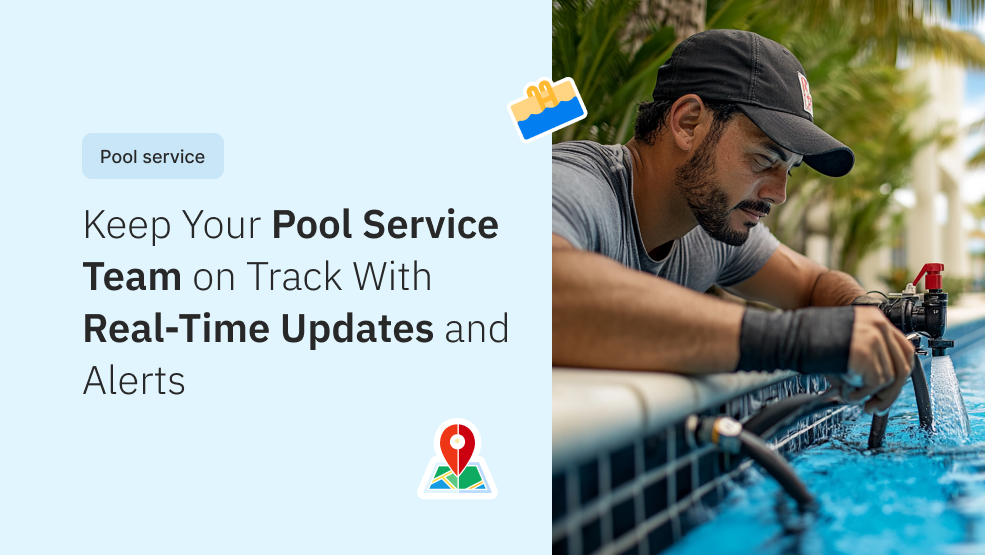Green living is not just for homeowners anymore. As a property manager or landlord, you have the power to make a big impact on the environment through sustainable practices. Adopting eco-friendly maintenance and upgrades can turn your properties into energy efficiency and sustainability models.
From smart thermostats to drought-resistant landscaping, the options for “going green” have never been greater or more affordable. Follow along to discover some simple changes you can make to transform your properties into sustainable, environmentally-friendly machines.
What is sustainable property maintenance?
Introducing sustainable property maintenance is all about improving how you manage your properties to benefit the environment. It focuses on efficiency, renewable resources, and reducing waste. By adopting some straightforward eco-friendly practices, you can make a big difference.
To get started, look at your energy usage. Things like installing solar panels, using smart thermostats, and switching to LED lighting are easy ways to reduce energy waste. You can save money in the long run and reduce your carbon footprint.
Then, evaluate your water systems. Low-flow showerheads, faucets, toilets, and rainwater harvesting systems can significantly decrease the amount of water you consume. Xeriscaping your outdoor spaces by using native plants also lowers water needs.
Choose sustainable and recycled materials when it is time for repairs or upgrades. Things like bamboo flooring, reclaimed wood, and low- or no-VOC paints are excellent options. Proper insulation, double-paned windows, and weatherstripping also improve efficiency.
Developing eco-friendly maintenance routines like regular HVAC filter changes, gutter cleanings, and pest control treatments using natural methods will keep your properties in optimal shape. Staying on top of the latest technologies and methods for sustainable property management ensures you are operating as efficiently as possible.
Going green with your properties benefits the planet and your bottom line. By making sustainable changes and maintaining an environmental mindset, you can create healthy, efficient spaces that will serve you well for years to come. Our communities and natural resources will thank you.
1. Start installing solar panels
Installing solar panels on your roof allows you to generate your own electricity and reduces your dependence on the power grid. Many homeowners are saving hundreds per month on utility bills by going solar. Monocrystalline panels are the most efficient but also the most expensive.
Polycrystalline panels are a more affordable choice for most homes and work great for powering essentials. If budget is a concern, consider starting with just a few panels to offset some of your energy usage. You can always add more panels over time as energy needs or budget allows.
In addition to solar panels, smart technology like programmable thermostats, LED lightbulbs, and energy-efficient appliances can help reduce your property’s environmental impact. Smart thermostats let you adjust the temperature from an app on your phone so you’re not wasting energy heating or cooling an empty home. LED bulbs last up to 25 times longer than incandescent bulbs and use at least 75% less energy.
When it is time to replace appliances, choose energy star-rated models which are third-party certified to be energy efficient. Every step you take to improve sustainability and efficiency helps, so look for ways to conserve both energy and money around your property. Going solar and smart is an investment in your property value and our shared future.
2. Conserve water with low-flow fixtures
Water is a precious resource, so conserving it should be a top priority for any sustainable property. One of the easiest ways to cut down on water usage is by installing low-flow fixtures like faucets, showerheads, and toilets.
Low-Flow Faucets and Showerheads
Standard faucets and showers can discharge over 5 gallons of water per minute, up to nearly 20,000 gallons per household yearly. Low-flow models reduce the flow to 1.5 GPM or less, using at least 60% less water. They offer the same water pressure and experience as regular fixtures but are much more efficient.

Dual-flush or low-flow toilets
Toilets are the largest water users in the home, accounting for nearly 30% of indoor consumption. Older toilets can use up to 6 gallons per flush, whereas low-flow or dual-flush models use 1.6 GPM or less. Dual-flush toilets offer a half-flush for liquid waste and a full-flush for solids, saving thousands of gallons per year.
Making the switch to low-flow fixtures is an easy, low-cost way to decrease your property’s water footprint significantly. With regular use, these sustainable plumbing alternatives can reduce consumption by up to 60-75% each year. They help conserve this vital resource for future generations while also lowering utility bills and operating costs.
4. Consider sustainable landscaping
Professional landscaping will help to achieve great curb appeal. But you can also enhance your eco-friendly efforts by selecting the right plants. When you are planting trees, shrubs, flowers, and bushes, prioritize native plants that thrive in your region. Optimize both aesthetics and sustainability with expert landscaping and eco-conscious plant choices.
Native plants
Choose native plants adapted to your climate. They require less maintenance, pesticides, and fertilizers. Group plants with similar light and water needs together for efficient care.
- Use compost or mulch around plants to improve soil health and prevent weeds.
- Collect rainwater to water plants. Install drip irrigation for efficient watering.
- Mow lawns to 2-3 inches to strengthen grassroots and prevent weeds. Leave grass clippings as a natural fertilizer.

Eco-friendly materials
When renovating or building, use sustainable materials such as,
- Recycled or reclaimed wood, metal, and plastic reduce waste in landfills.
- Natural materials like stone, adobe, or bamboo are durable and biodegradable.
- Low or no-VOC paints, stains, and sealants improve indoor air quality.
- Insulation, roofing, and siding made from recycled materials conserve energy.
- Permeable pavement, gravel, or paving stones allow rainwater to soak into the ground.
Properties using sustainable landscaping and eco-friendly materials experience higher occupancy rates and property values. Tenants and buyers increasingly prefer environmentally-friendly spaces. Regular maintenance of these sustainable features, along with energy and water efficiency upgrades, creates healthy, efficient properties that help the environment.
5. Create regular green maintenance routines
Implement regular maintenance routines that use eco-friendly practices to make your property as sustainable as possible.
Energy efficiency
Conduct annual audits of major systems like HVAC, water heaters, and appliances. Check that everything is running efficiently and replace outdated technology with energy star-rated equipment. Install a programmable thermostat to reduce energy usage when spaces are unoccupied.
Water conservation
Inspect plumbing fixtures like faucets, showers, and toilets for leaks and drips at least twice a year and repair or replace them if needed. Low-flow or high-efficiency fixtures can significantly cut down on water waste—mulch plant beds and gardens to help the soil retain moisture. Group plants with similar light and water need together for efficient irrigation.
Waste reduction
Establish recycling and composting programs to divert waste from landfills. Place clearly marked bins in convenient locations and educate all property users on what can be recycled and composted. Donate or repurpose used furniture, electronics, building materials, and other items whenever possible. Use green cleaning products and practices to minimize chemical usage.
Renewable energy
Consider installing solar panels, wind turbines, or geothermal systems to generate clean energy for your property. Many utility companies and local governments offer incentives and rebates for switching to renewable energy. The initial investment in sustainable technology will pay off over time through energy cost savings and a smaller environmental footprint.

Next steps
It’s better for the environment, cuts down on costs in the long run, and helps ensure you have an energy-efficient, eco-friendly place to call home. Developing good green habits and routines will benefit both the environment and your bottom line. Make the changes today to do your part in creating a greener tomorrow for generations to come.
Step up and be a force for good. Mindful closet for a sustainable future!






